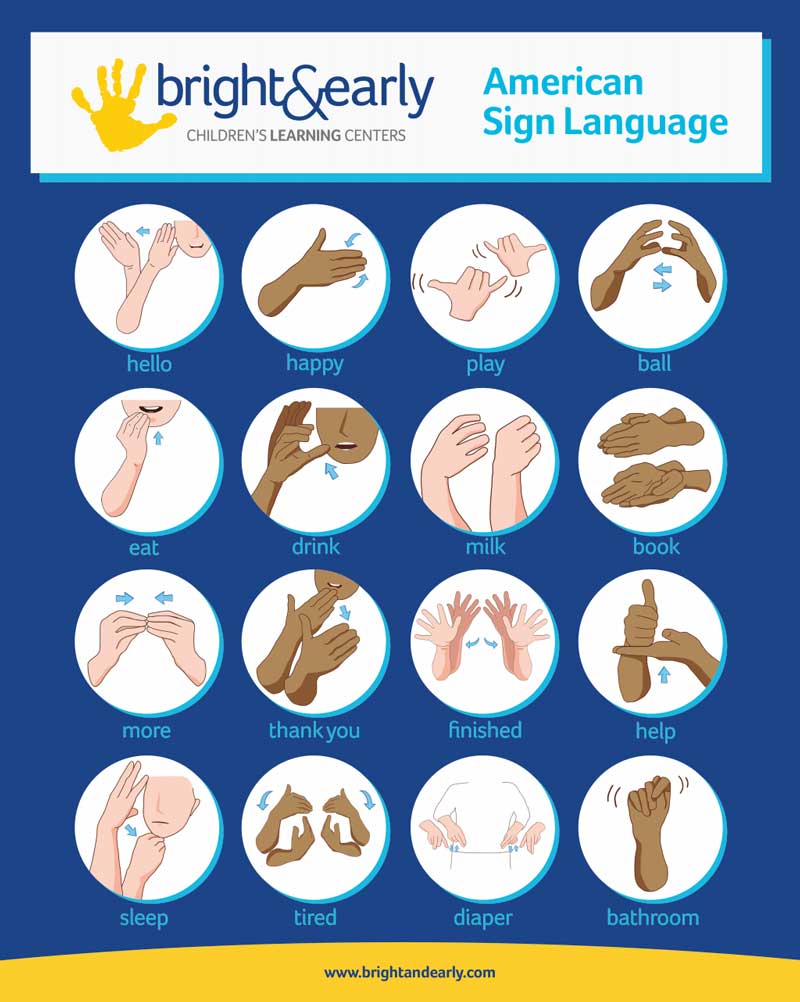Encouraging Early Expression
Our teachers know basic signs in American Sign Language, and they model these signs to children. Children catch on quickly, and they will begin to express their needs using signing in addition to using verbal and physical cues. ASL offers teachers and children another pathway of communication, increasing their overall communicative ability and strengthening their interpersonal connections. Since ASL is considered a world language, children who can sign along with their primary verbal language are considered bilingual, which increases their language processing skills by engaging both hemispheres of the brain.
Children who use ASL experience lower levels of frustration since they gain an alternative avenue of communication. Since children become used to watching for hand signs, they begin to pay better attention to social gestures. Signing has been shown to strengthen children’s bonds with their caretakers, both teachers and parents.
Infants are able to begin remembering one-word signs and gestures in their first year, which allows them to communicate their needs and emotions non-verbally. As children develop and gain experience with ASL, their communicative ability increases with both signs and verbal vocabulary.


